CUHK invents two technologies for vascular intervention simulation and Manga computation| | 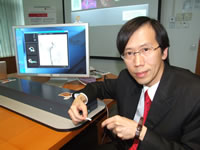 | | | | Professor
Simon C H Yu of the Department of Diagnostic Radiology and Organ
Imaging, Faculty of Medicine, CUHK, demonstrates the 'Vascular
Intervention Simulation System'. | | | 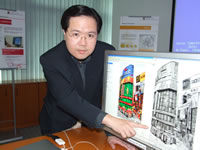 | | | | Professor
Wong Tien-Tsin of the Department of Computer Science and Engineering,
Faculty of Engineering, CUHK, introduces the 'omputational Manga
System'. | | | 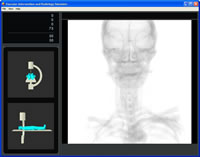 | | | | 'Vascular Intervention Simulation System' | | | 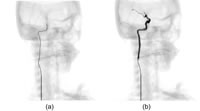 | | | | 'Manga Colourization': 'Manga Colourization' (right) helps avoid colour leakage (left 1-3). | | | 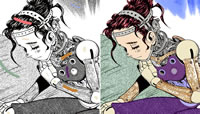 | | | | Coloured
pictures can be turned into manga by 'Manga Screening' (right), with a
much more promising result than the traditional halftone technique
(middle). | | |  | | | | 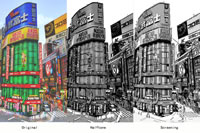 | |
The
Chinese University of Hong Kong (CUHK) presented a number of
technological projects at the coming International ICT Expo 2009 at the
Hong Kong Convention and Exhibition Centre from 13 to 16 April. Two
projects displayed for the first time are the 'Vascular Intervention
Simulation System' for training doctors in vascular and interventional
radiology (VIR) operations, and the 'Computational Manga System' for
improving the efficiency of manga production.
'Vascular Intervention Simulation System'
Common killer
diseases, such as blood vessel blockage, cerebral aneurysm and cancer,
were previously great challenges for doctors. Surgery was considered
the only treatment option. With the development of VIR, doctors can
perform image-guided and minimally-invasive therapeutic operations by
using medical imaging devices and high-technology medical equipment
through tiny pin-hole punctures on patients' bodies. VIR operation has
become an indispensable standard component in the modern medical
arsenal and the demand in Hong Kong has increased rapidly in recent
years. However, safe and effective performance of precise VIR
procedures requires highly skilled doctors with specialized training.
The restrictions of the traditional training mode through hands-on
practice on animals and real cases call for the development of a
comprehensive computerized training system in this regard.
Simulation
systems for VIR training currently available in the West have been
developed on the data of local clients, focusing on the treatment of
diseases common in the West, and thus may not be applicable to the
Asian region. Since the end of 2006, Professor Heng Pheng-Ann of the
Department of Computer Science and Engineering, Faculty of Engineering,
CUHK and Professor Simon C H Yu of the Department of Diagnostic
Radiology and Organ Imaging, Faculty of Medicine, CUHK, have jointly
developed a 'Vascular Intervention Simulation System' for treating
common diseases in Asia. The system makes use of patients' data to
reconstruct the 3D anatomic model of organs and vascular network, and
simulate the whole VIR procedures and patients' bodily responses,
including the slight resistance to the leading wires and
micro-catheter, and patients' respiration and blood flow. The system
can greatly enhance the effectiveness of VIR training and can also be
used for education and evaluation of medical personnel.
'Computational Manga System'
Manga (Japanese
comics) is popular worldwide and itself a significant creative
industry. The production procedures are nevertheless highly
complicated, time-consuming and labour-intensive. Coloured and
black/white (b/w) mangas are usually produced separately, leading to
inconsistency in styles between the two versions. Professor Wong Tien-Tsin and
and Professor Heng Pheng-Ann of the Department of Computer
Science and Engineering, CUHK, have been developing a 'Computational
Manga System' since 2005 for efficiency and consistency enhancement,
and cost reduction of manga production. It comes with two functions -
'Manga Colourization' and 'Manga Screening', enabling easy
colourization and de-colourization.
'Manga Colourization'
Colourization is
the most time-consuming procedure in manga production. Using the
existing software to colourize regions without enclosed boundaries will
result in leakage, as computers cannot identify the specific perimeter
for colourization. 'Manga Colourization' can automatically identify and
simulate hand-drawn hatching and printed screening patterns, and fill
up different regions with the right colours quickly.
'Manga Screening'
It can mimic the
way a cartoonist lays screens with different patterns to transform
coloured images into b/w manga, with a much more promising result than
the traditional halftone technique. The new technology help cartoonists
substantially reduce their time spent on preparing the background, and
focus more on the design of characters.
The Chinese University of Hong Kong (CUHK)
www.cse.cuhk.edu.hk/~ttwong/papers/manga/manga.html |